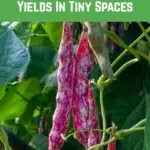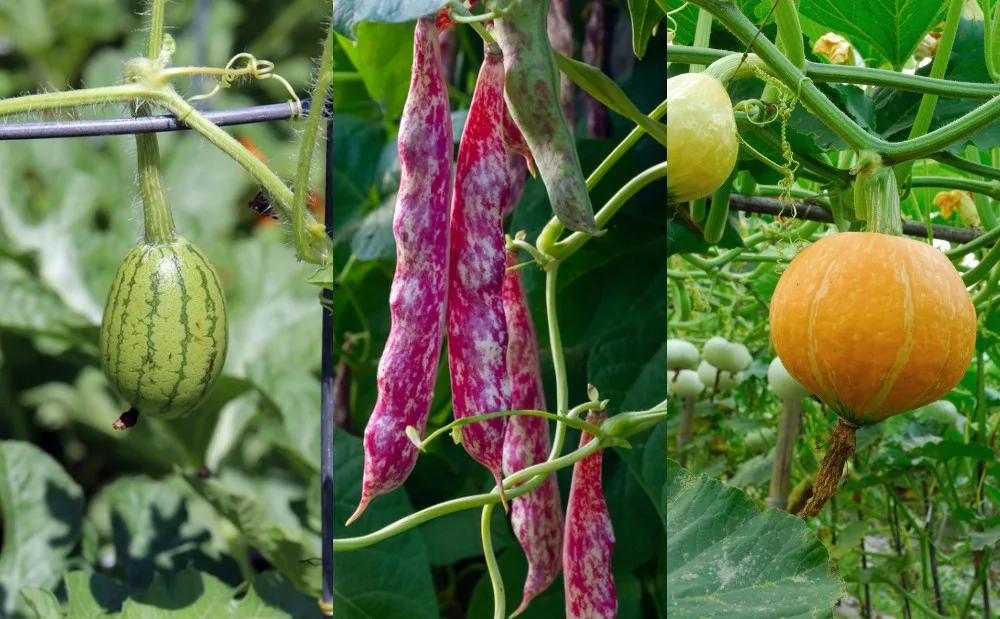
When the suggested image of “vertical gardening” pops into your head, what do you see?
Your mind may automatically dream up luscious ferns, bromeliads, succulents and epiphytes, inspired by many an Instagram account.
Pinterest is also full of cute and clever ideas on how to pull off this crafty feat of making both indoor and outdoor decorative vertical gardens with an exotic flair.
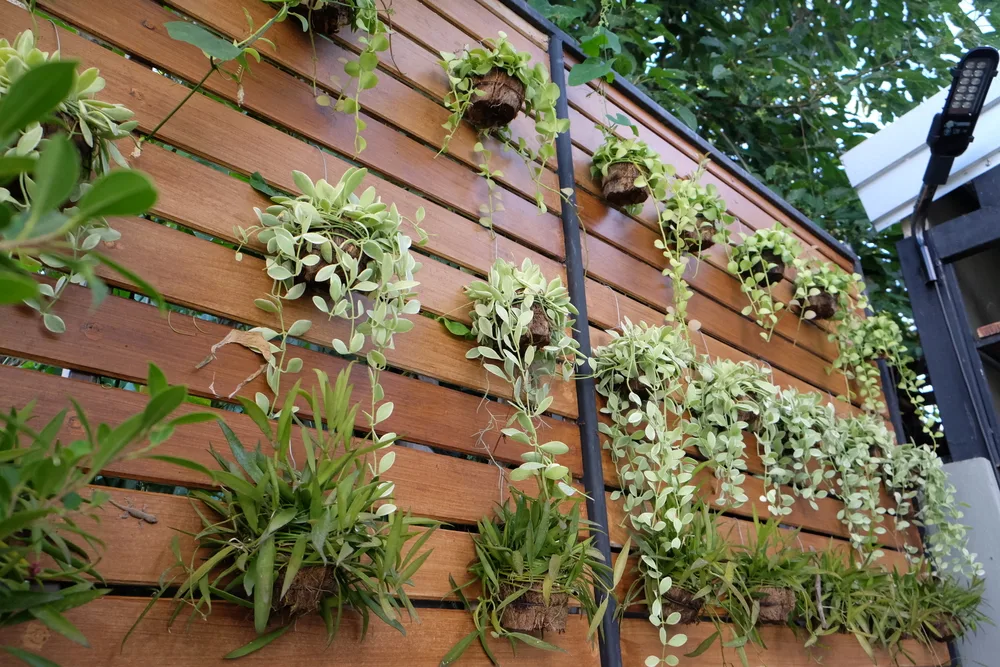
But we know that you are here for something else.
To find out which edible fruits and vegetables grow best in a vertical garden. That is the practical approach that clever gardeners take when they are facing a space issue, that is of having a small garden.
Benefits of vertical gardening
It is truer than true, not everyone has the amount of space they would enjoy for gardening. This includes urban farmers, those who live in the suburbs or the city, and those who have no land at all.
Yet gardening is a wonderful activity that we all have access to, only sometimes we need to get creative – and rethink the way vegetables can be grown.
With a little land and a strong desire to grow food, you can turn a few seeds into a lot by growing vertically, rather than space-hogging horizontally. The use of trellises (handmade or store bought) and pots/containers of all sizes will help you to grow several varieties of edible crops. Design-wise, it is important to think in layers, as well as knowing the life cycle of the plant.
Once you have discovered how to grow squash vertically, you’ll have the know how and the know why, to create a vertical garden.
Growing vertically allows you to:
- grow more food in less space
- harvest cleaner fruits and vegetables
- make watering, pruning and fertilizing easier
- keep crops off the ground decreasing chance of diseases
- grow a natural privacy screen
- create a microclimate for more sensitive fruit trees
With these space-saving benefits in mind, let’s jump straight to the list of vegetables, fruits and edible flowers you can start growing vertically.
Summer and winter squashes
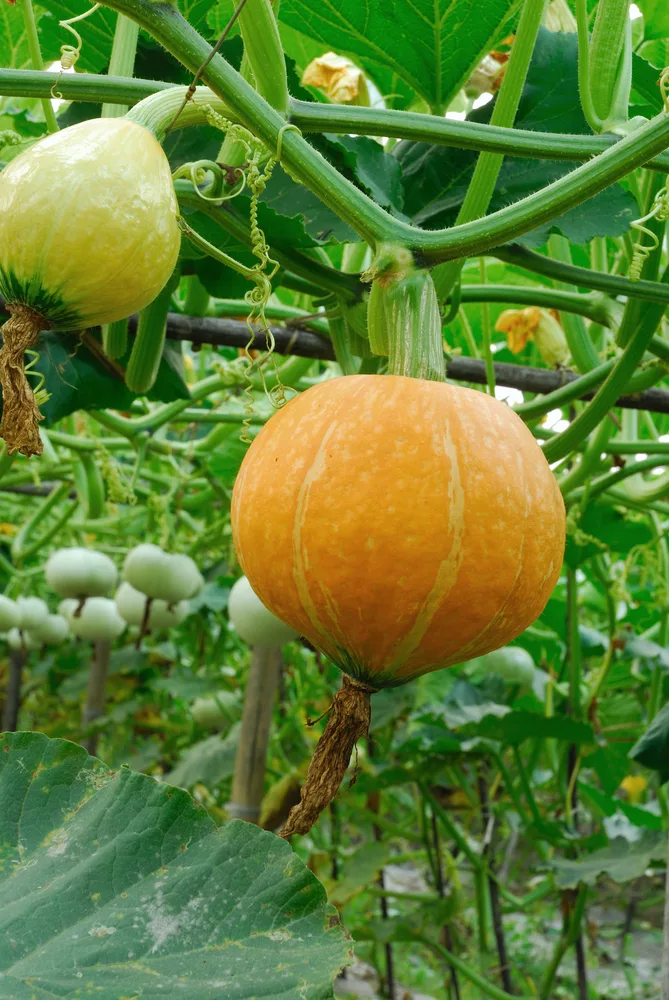
As previously mentioned, all manner of squashes and gourds can be grown on trellises and fences, even letting them climb on trees. This is possible due their natural vining tendencies.
Certain varieties, when left to sprawl on the ground, can travel 20′ or more! Imagine all the space you can save by training them to grow up.
Prime candidates for trellising are:
- calabash
- patty pan squash
- yellow summer squash
- acorn squash
- butternut squash
- delicata squash
- sugar pie pumpkin
- luffa (loofah)
Keep those enormous non-trailing Black Beauty zucchinis off the ground, sowing their seeds in containers and leave more space for lettuce, radishes, and low-growing herbs.
Here’s our guide for growing squash vertically.
Cucumbers
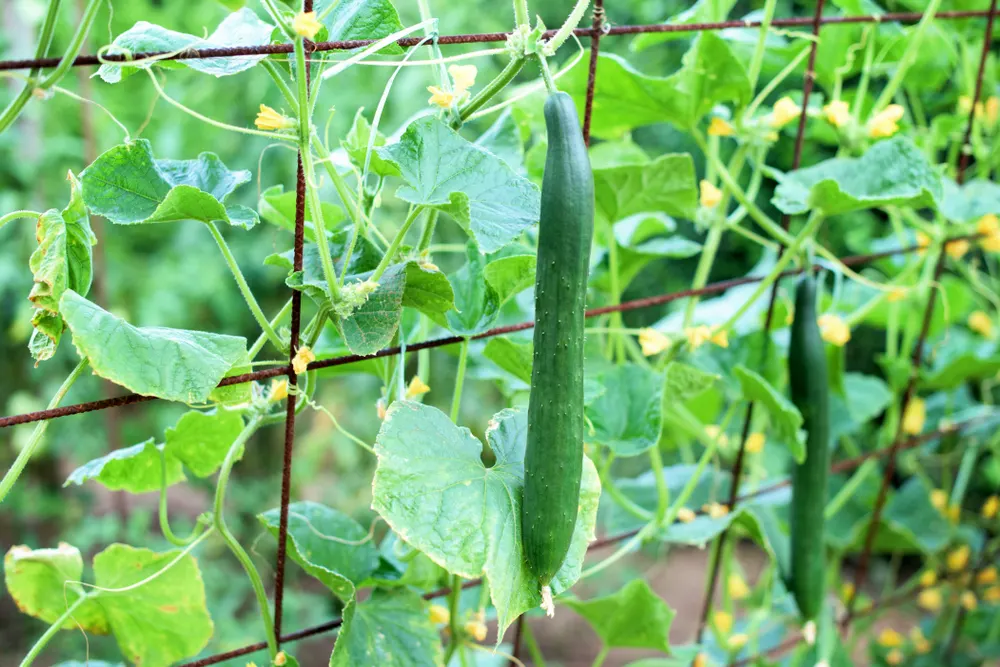
If you’ve ever had trouble growing a cucumber that is uniformly green all around, chances are good that you should give vertical growing a try.
Skip the yellow spots this year and preserve a jar of pickles that look as if they came from the store.
Yes, commercial growers know that cucumbers are best grown hanging in a greenhouse where the fruits never touch the soil. The next best thing for you to do at home is to grow cucumbers in a hanging basket.
Melons
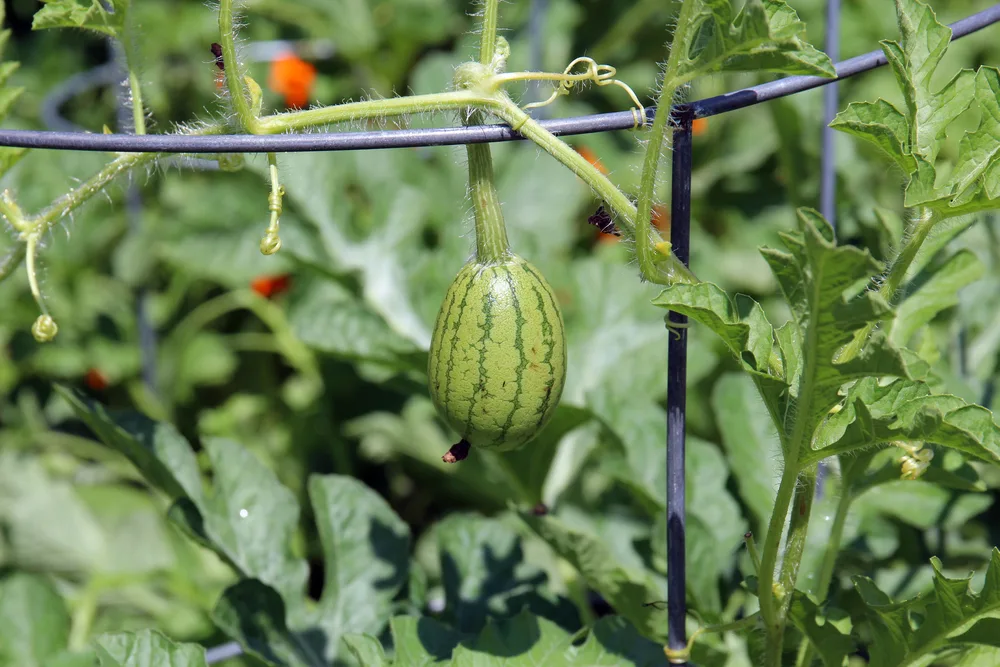
Canteloupes and watermelons are space hogs in the garden, growing this way and that, crawling over green onions and strangling carrot tops. As hard as you try to reroute their vines, they always seem to manage to redirect their growth when you aren’t looking.
If you have the amount of sunlight required, and a long enough growing season to see them to maturity, it may be worth experimenting in growing them vertically. Just make sure to have a very strong support system, in case the fruits grow larger than you expect!
Of course, when growing melons vertically, you will want to choose varieties that are small enough to trellis.
- Sugar Baby watermelon (8-10 lb. fruits)
- Golden Midget watermelon (3 lb. fruits)
- Golden Jenny melon (2 lb. fruits)
- Charentais melon (2-3 lb. fruits)
- Eden’s Gem melon (2-3 lb. fruits)
Less than 10 lbs. is a good characteristic to aim for, otherwise you will need to invest in slings to support the growing fruit.
Tomatoes
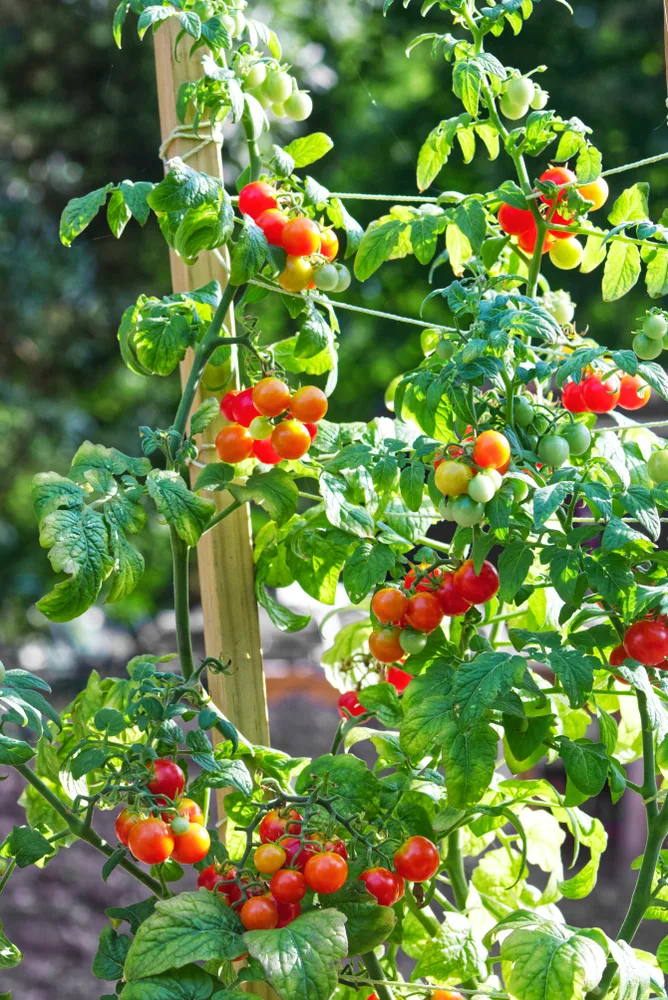
Tomatoes come in all colors, shapes and sizes, differing in growing habits too. Some are dwarf and prefer to lay close to the ground, such as mini-cherry varieties, while others are happy to keep climbing as long as there is a support to hang on to.
Your regular garden routine may already include the use of tomato cages, though you can always improve upon aesthetics by checking out these 38 tomato support ideas.
Beans
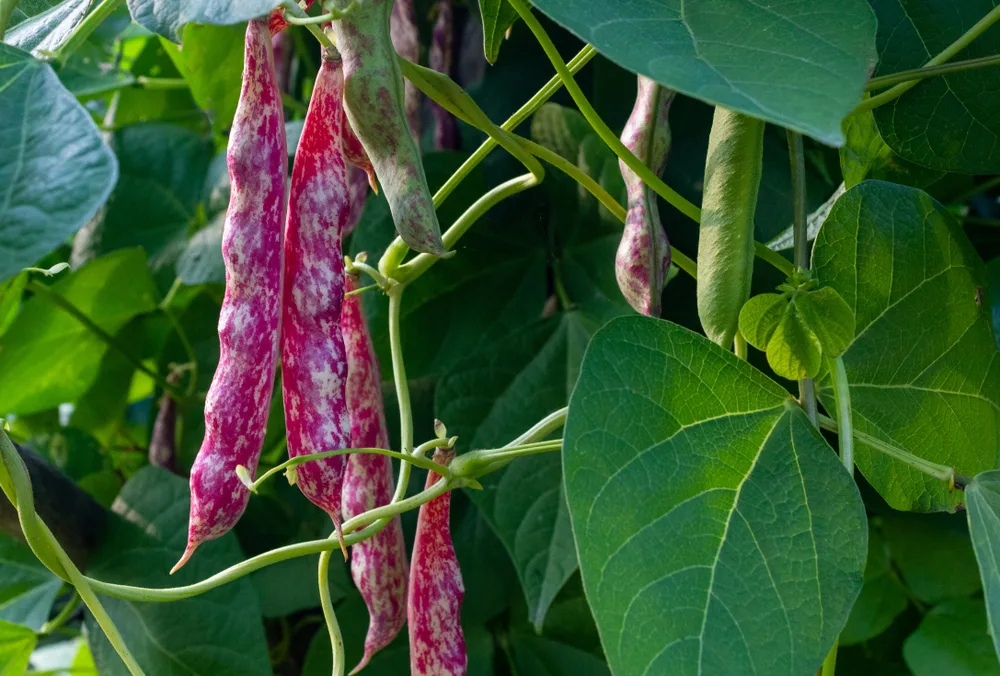
Perhaps the easiest vegetables to trellis are pole beans. Just don’t try to coax bush beans to grow more than they should – they grow just as their name suggests: in bush form. They could, however, be planted below another climbing plant.
It is good to know that there is more than one way to trellis your beans:
- use the Three Sisters technique (planting corn, squash and beans together)
- create a bean tipi
- make an A-frame with string
- weave jute (or other natural twine) between wood posts
- let them climb up a hazel or bamboo pole
Trellising both beans and peas are simple. here are some more DIY trellis ideas for both.
Peas
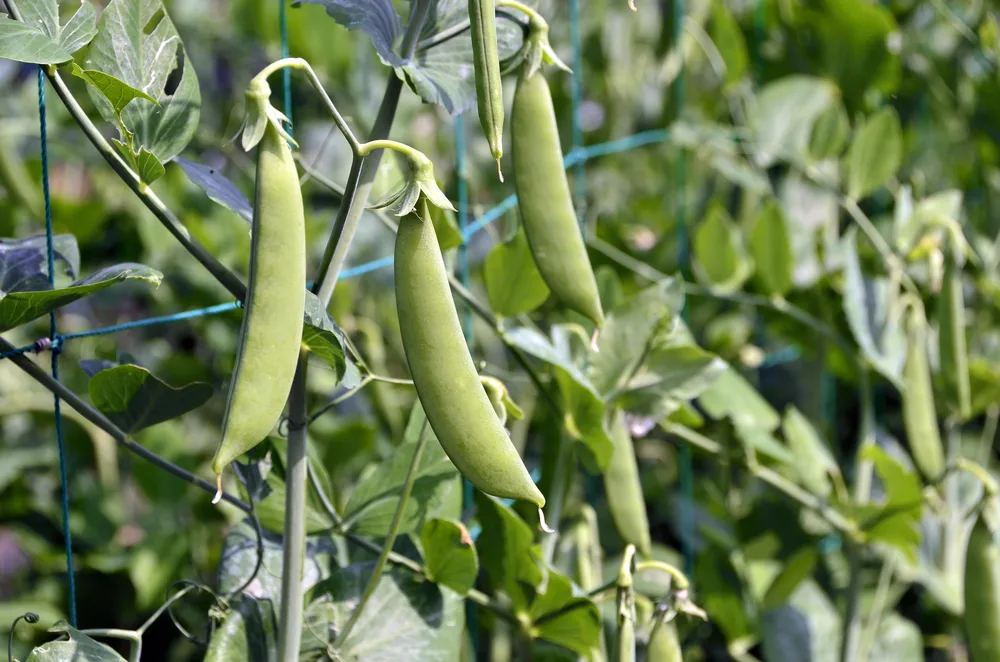
Just as with beans, there are two different types: bush peas and climbing peas. Within the climbers are snap peas and snow peas. Peas are incredibly tasty and so easy to grow, children will love to take part of the action too.
Peas that are grown vertically, are healthier than those left to trail on the ground since a trellis offers better airflow around the leaves. This, in turn, helps to prevent mold and mildew from infesting the leaves.
Vertical trellising of peas also makes them easier for you to harvest and harder for the slugs and rabbits to eat.
Everything you need to know about growing peas is right here:
Easy Guide to Growing Perfect Peas @ The Micro Gardener
How to Trellis Peas in Your Garden @ Get Busy Gardening
Nasturtiums
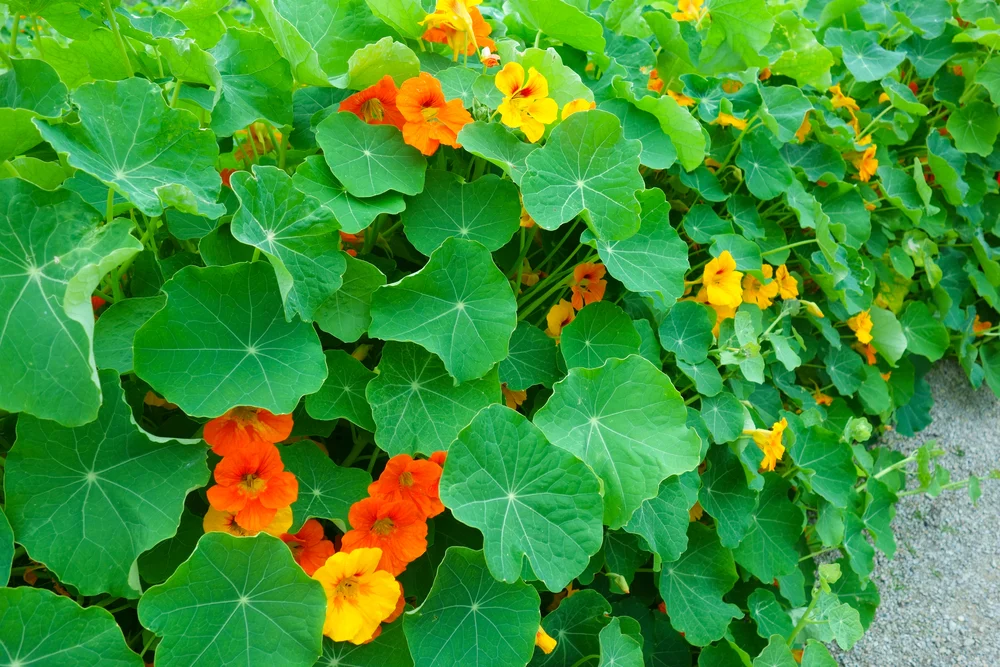
One of our favorite edible flowers in the garden is nasturtiums. Along with chive flowers and cornflowers, and a myriad of other delicate petals.
What makes nasturtiums so special, is that they love to climb (8-10′), making them perfect for covering garden fences and trellises with a vibrant burst of yellow and orange summer colors.
Even better yet, the entire plant is edible from flowers to shoots to leaves. It is food, medicine and art all at once. Peppery nasturtiums are a must in every garden, especially if you are wanting to cover an area with a delightful annual that also attracts pollinators to your garden.
Strawberries
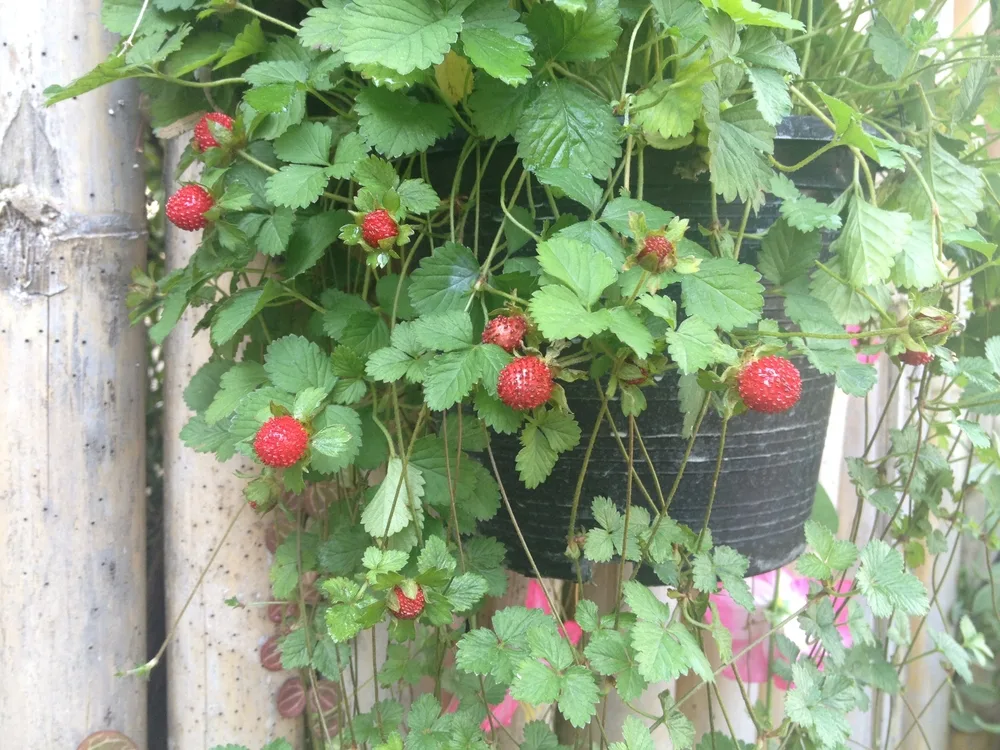
While strawberries don’t really climb or vine, they do love to drape. This makes them a wonderful choice for hanging pots and baskets, or for strawberry pots that look lovely sitting at the edge of the patio. In this way they can add a tasty dimension to your garden.
When you combine different aspects of vertical gardening together, the end result is not only edible, it is beautiful and useful.
Keep this in mind when planting and making trellises, using vertical gardening to create a space worth spending time in – and plucking a fruit from, from time to time too.
Grapes
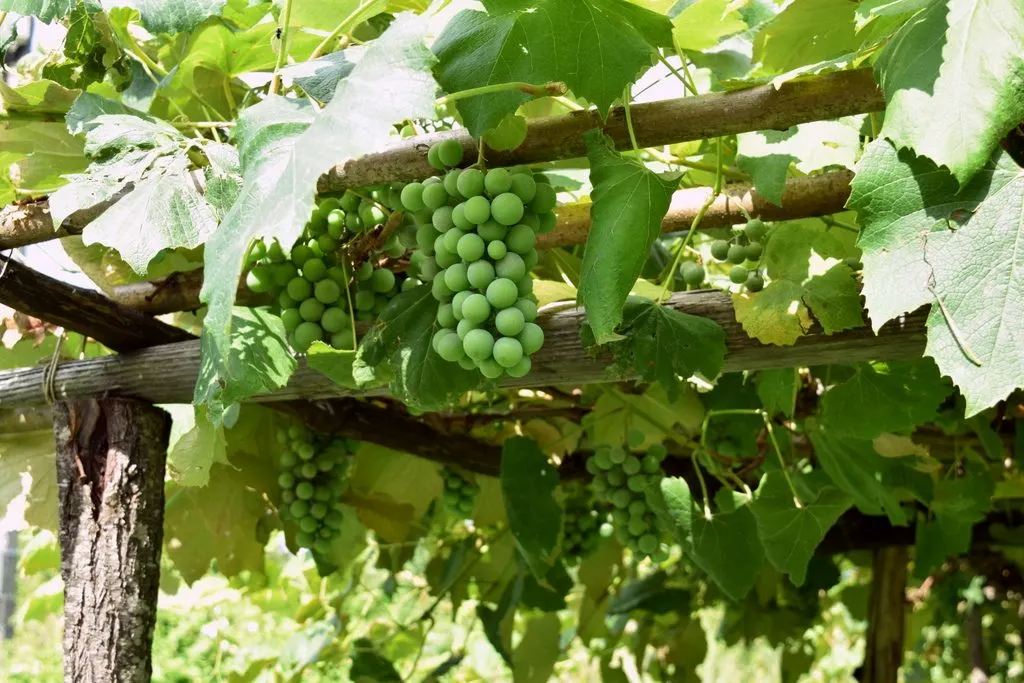
So far, we’ve only examined the possibility of trellising annuals. But what if you are seeking longevity and reliability of an edible crop?
Get a grape vine, or two. Plant it in the soil that it likes best and you’ll be able to harvest a bountiful grape crop for the next 50 years or so. More than enough for fresh eating and canning, perhaps even enough for a bottle of vintage homemade wine, if that is your goal.
Grapes only require pruning once or twice a year, are drought tolerant depending on the variety and are considered low-maintenance.
Plus they can provide much needed shade from the hottest summer sun, so plan the height of your trellis accordingly, if you’d like to comfortably sit under it one day.
Hops
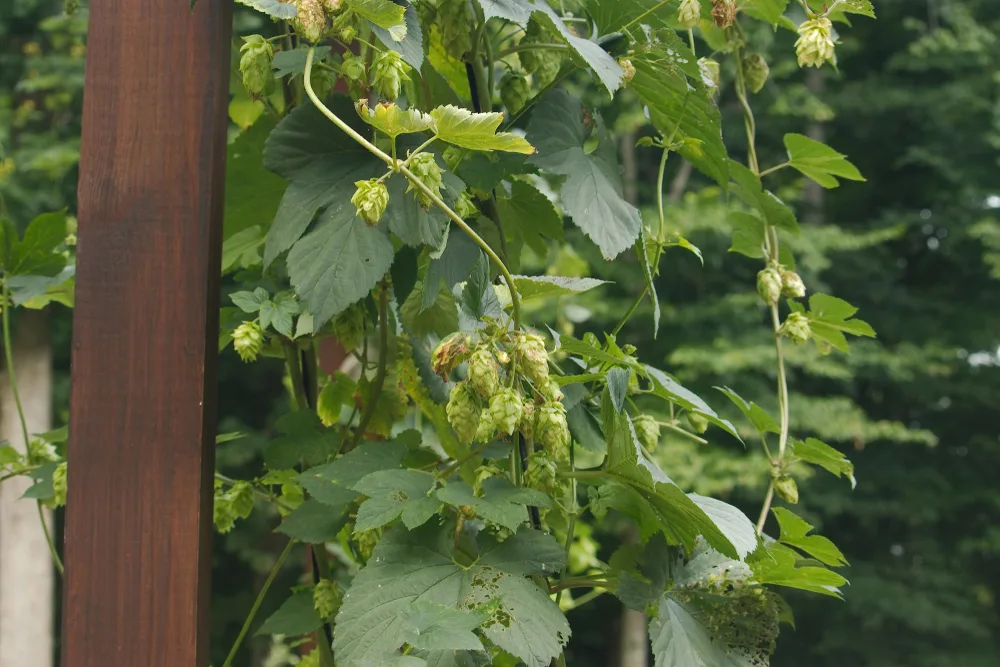
If you were wondering what else would make the list, hops (Humulus lupulus) is the answer.
I thought long and hard about adding chayote, Malabar spinach or bitter gourd, though they require more warmth/heat than what many gardens have to offer. Each of these are vining and delicious in their own ways, but we’ll leave them for now and go onto the more ubiquitous hops.
Though they are most commonly used in the production of beer, they have several other (more important) uses.
First and foremost, hop shoots in late spring are entirely edible and decidedly delicious. If you have never tried them before, you’ll either have to plant them, or forage hops from the wild. You won’t find them in a store, though they may appear on the menu of a fancy restaurant.
Eat the hop shoots raw, in salads, sautéed in butter or bacon grease, grilled or even pickled. They taste like asparagus, or better.
Let hops grow grandly (12-15′) over your trellis or fence, then harvest the flowers for tea in autumn.
If you are in need of help with gardening ideas for small spaces, watch videos for more inspiration and read plenty of books too.
Here is a great one to get started with: Vertical Vegetables & Fruit: Creative Gardening Techniques for Growing Up in Small Spaces by Rhonda Massingham Hart

Get the famous Rural Sprout newsletter delivered to your inbox.
Including Sunday ramblings from our editor, Tracey, as well as “What’s Up Wednesday” our roundup of what’s in season and new article updates and alerts.


